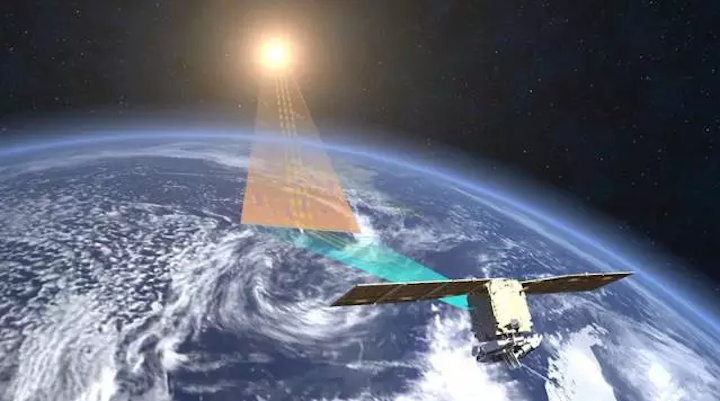
An animation created using images from China's Fengyun-4A satellite.
27.10.2017

A composite image of the Earth using the first images from China's Fengyun-4A weather satellite. CNSA
-
China will make data from its new-generation Fengyun-4A weather satellite and carbon-monitoring TanSat freely available internationally, a Chinese official has said.
Yang Jun, director general of the National Satellite Meteorological Centre, part of the China Meteorological Administration (CMA), made the remarks at the China Day event during the Group on Earth Observations (GEO) Week 2017 in Washington, DC, Xinhua reported.
"In the future, we will continue to provide more and better satellite observational products for users worldwide," Yang said.
Fengyun-4A and TanSat were both launched in December 2016. Fengyun-4A is the first of a second generation of Chinese weather satellites for geosynchronous orbit, while TanSat is the country's first carbon-monitoring probe, operating in low Earth orbit at an altitude of 700 km.

A rendering of TanSat in operation in low Earth orbit. NSSC/Chinese Academy of Sciences
-
Fengyun-4A is undergoing on-orbit testing, with the CMA in the process of testing FengYun-4's various products including cloud, atmosphere and surface conditions, Yang said.
"FengYun-4 is scheduled to be put into use in early 2018, with its data and products being freely available to international users," he added.
Yang said that TanSat, with a precision of carbon concentration monitoring at below four parts per million, was "of great importance to a full understanding of the global carbon cycle process and its impact on global climate change".
The data is to be made available via the Fengyun satellite data centre website.
The five-tonne Fengyun-4 satellites are based on the SAST-5000 platform, developed by the Shanghai Academy of Space Technology (SAST), and have an intended operational lifetime of 5-7 years.
Over the coming years they will provide much greater capabilities than the older Fengyun-2 series geosynchronous satellites, improving vastly on spatial resolution in terms of imaging, as well as being capable of sounding and lightning mapping.

An animation created using images from China's Fengyun-4A satellite. CMA
The 620 kg TanSat carries two main instruments: a high-resolution Carbon Dioxide Spectrometer for measuring the near-infrared absorption by CO2, and a Cloud and Aerosol Polarimetry Imager (CAPI) to compensate the CO2 measurement errors by high-resolution measurement of cloud and aerosol.
The mission could greatly improve the accuracy of China's annual GHG emissions estimates, which are currently based largely on raw energy consumption and cement production, and verify mitigation efforts.
Funded by China's Ministry of Science and Technology (MOST) and implemented by the CAS, the TanSat mission involves international collaboration with the University of Leicester and University of Edinburgh in the United Kingdom.
The Finnish Meteorological Institute (FMI) will also play an important role, by validating the TanSat observations using ground based observations taken in Sodankylä in Lapland.
Quelle: gbtimes